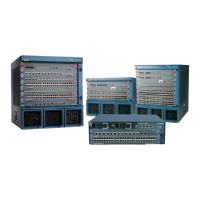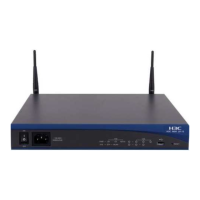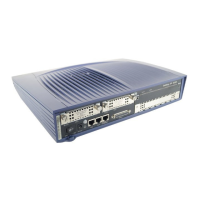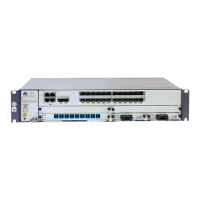l Run the vlan-mapping modulo modulo command to enable VLAN-to-instance mapping
assignment based on a default algorithm.
By default, all VLANs in an MST region are mapped to MSTI 0.
NOTE
l The instance instance-id vlan { vlan-id [ to vlan-id ] }&<1-10> command is recommended because
VLAN-to-instance mapping assignments cannot meet actual mapping requirements.
l In the command, vlan-mapping modulo indicates that the formula (VLAN ID-1)%modulo+1 is used.
In the formula, (VLAN ID-1)%modulo means the remainder of (VLAN ID-1) divided by the value of
modulo. This formula is used to map a VLAN to the corresponding MSTI. The calculation result of
the formula is ID of the mapping MSTI.
Step 5 (Optional) Run:
revision-level level
The MSTP revision number is set.
By default, the MSTP revision number is 0.
If the revision number of the MST region is not 0, this step is necessary.
NOTE
The change of related MST region configurations (especially change of the VLAN mapping table) causes
the recalculation of spanning trees and the route flapping in a network. Therefore, after an MST region
name, VLAN-to-instance mappings, and an MSTP revision number is configured, activating the MST
region is necessary. You can run the check region-configuration command in the MST region view to check
whether region configurations are correct. After confirming that region configurations are correct, run the
active region-configuration command to activate MST region configurations.
Step 6 Run:
active region-configuration
MST region configurations are activated so that the configured region name, VLAN-to-instance
mappings, and revision number can take effect.
If this step is not done, the preceding configurations cannot take effect.
If you have changed MST region configurations on the switching device after MSTP starts, run
the active region-configuration command to activate the MST region so that the changed
configurations can take effect.
----End
9.2.4 (Optional) Setting a Priority for a Switching Device in an MSTI
The lower the numerical value is, the higher priority a switching device has and the more likely
the switching device will be selected as a root bridge.
Context
In an MSTI, there is only one root bridge and it is the logic center of the MSTI. In root bridge
selection, the switching device with high performance and network hierarchy is generally
selected as a root bridge; however, the priority of such a device may be not that high. Thus setting
a high priority for the switching device is necessary so that the device can function as a root
bridge.
Other devices with low performance and network hierarchy are not fit to be a root bridge.
Therefore, set low priorities for these devices.
Quidway S7700 Smart Routing Switch
Configuration Guide - Ethernet 9 MSTP Configuration
Issue 01 (2011-07-15) Huawei Proprietary and Confidential
Copyright © Huawei Technologies Co., Ltd.
435

